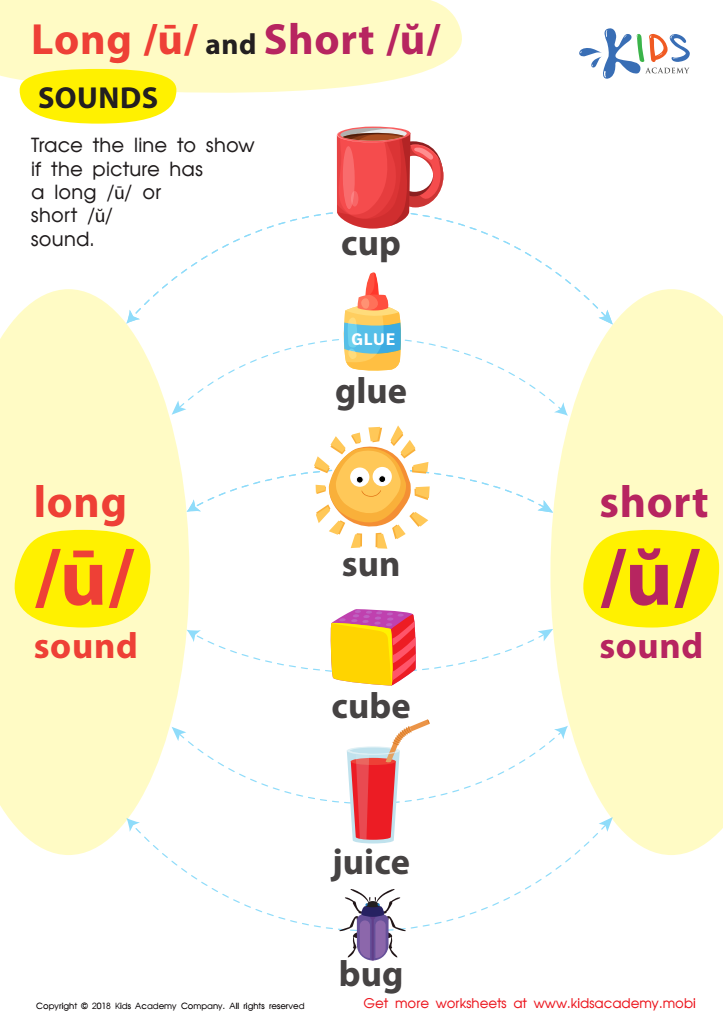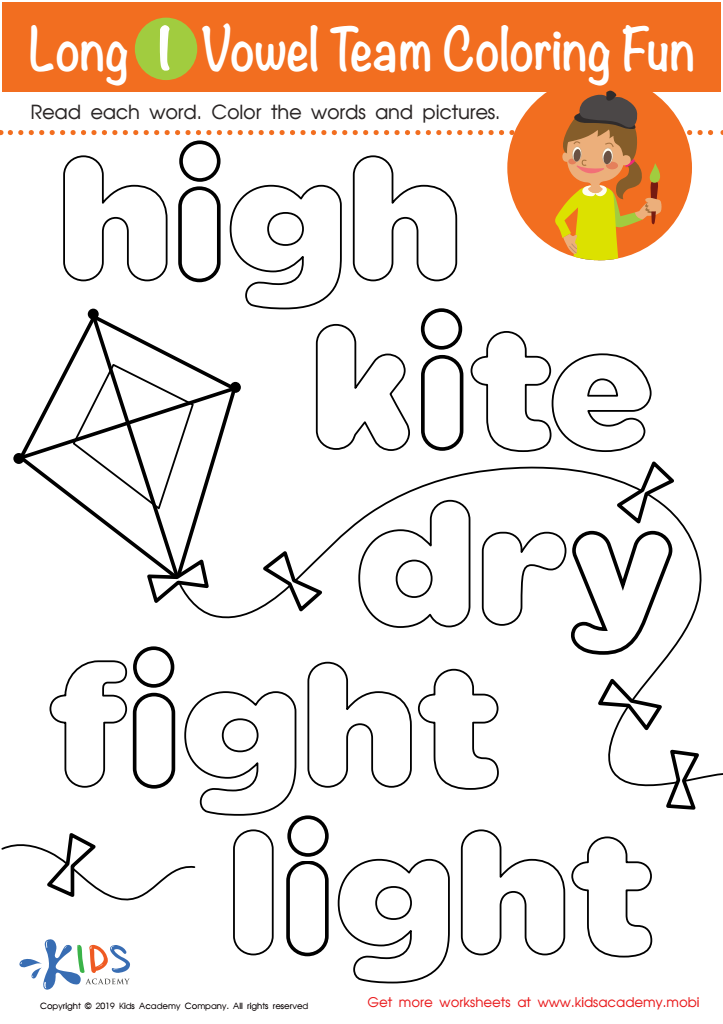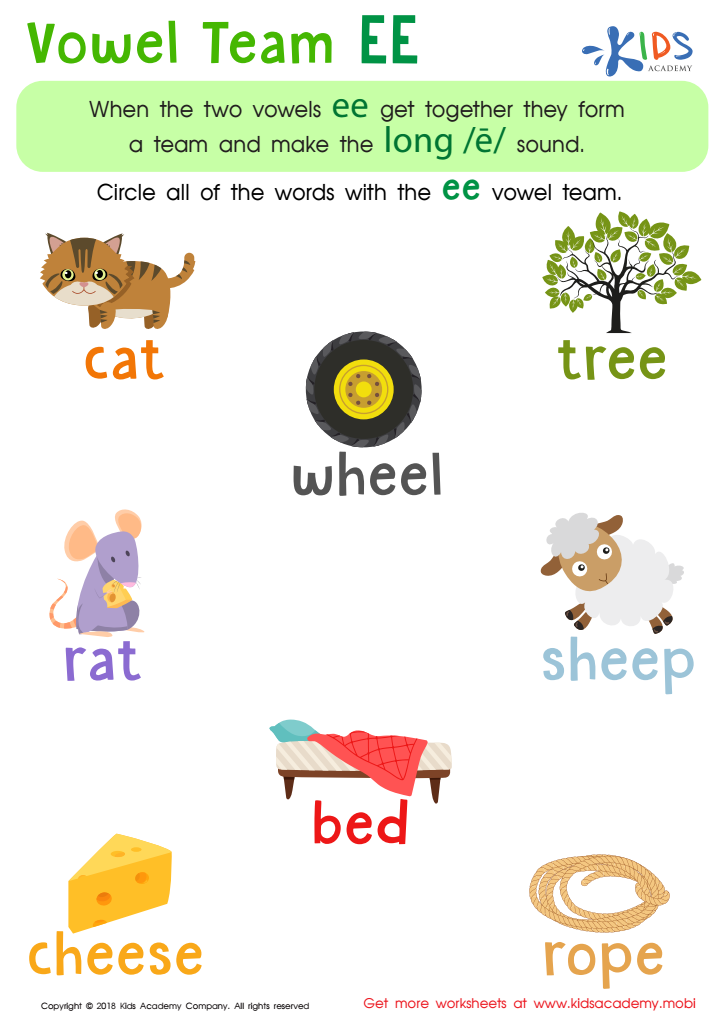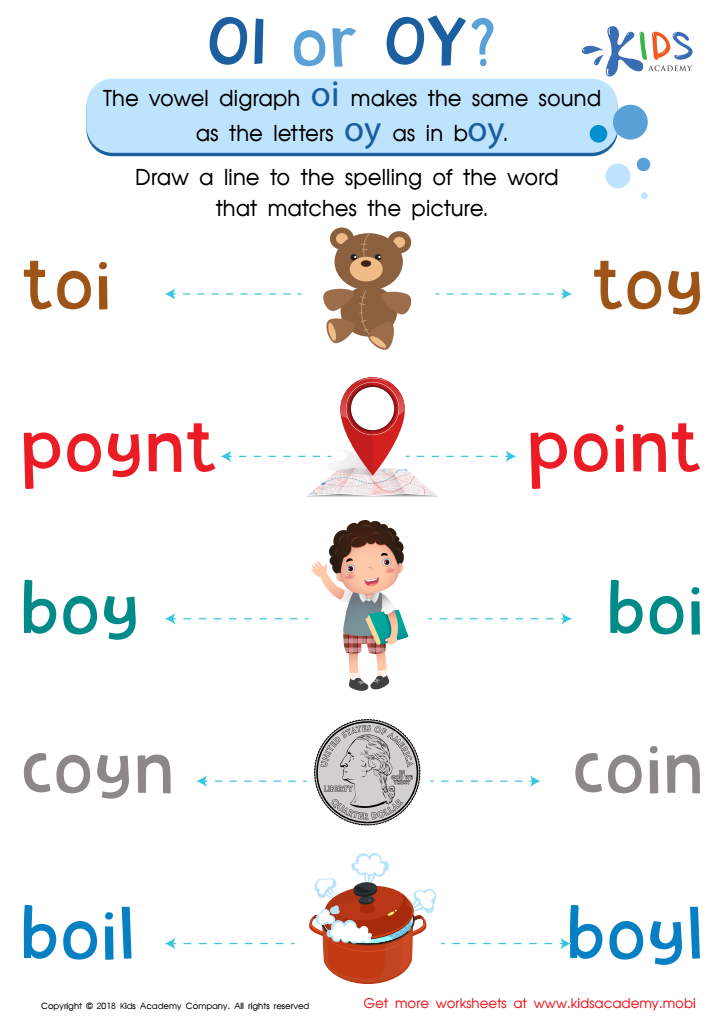Vowel Recognition Normal Vowels Worksheets for Ages 8-9
4 filtered results
-
From - To
Enhance your child's reading skills with our Vowel Recognition Normal Vowels Worksheets designed specifically for ages 8-9. These engaging worksheets focus on helping young learners recognize and differentiate between regular vowels. Through fun activities like word sorting, fill-in-the-blanks, and vowel-focused exercises, children will develop crucial phonetic awareness and improve their reading fluency. Our user-friendly resources make learning both effective and enjoyable, fostering a love for literacy while reinforcing essential skills. Perfect for classroom use or at-home practice, these worksheets are an excellent tool for educators and parents alike. Start your child's journey to confident reading today!


Reading: Long U and Short U Sounds Worksheet


Long I Vowel Team Coloring Worksheet


Reading: Vowel Team EE Worksheet


Reading: OI and OY Worksheet
Vowel recognition is a crucial aspect of literacy development for children aged 8-9. At this age, students are transitioning from learning to read to reading to learn, making it essential for them to master normal vowels (a, e, i, o, u). Understanding vowel sounds enhances phonemic awareness, allowing children to decode words more efficiently, which is foundational for reading comprehension.
When children recognize and differentiate between vowel sounds, they're better equipped to tackle more complex words and sentences. This ability directly influences their reading fluency and writing skills. By focusing on normal vowels, teachers and parents can help students form accurate phonetic dependencies, leading to improved spelling and vocabulary. Moreover, strong vowel recognition can prevent confusion between similar-sounding words, reinforcing their writing and communication skills.
Parents and teachers who emphasize this aspect of literacy can foster a love for reading. By incorporating fun activities that engage students in vowel practice, they encourage a positive learning environment. Ultimately, supporting children in mastering vowel recognition is vital for their overall academic success and confidence in language arts. Both educators and parents have a pivotal role in nurturing these skills, ensuring children reach their full potential as competent readers and communicators.
 Assign to My Students
Assign to My Students















